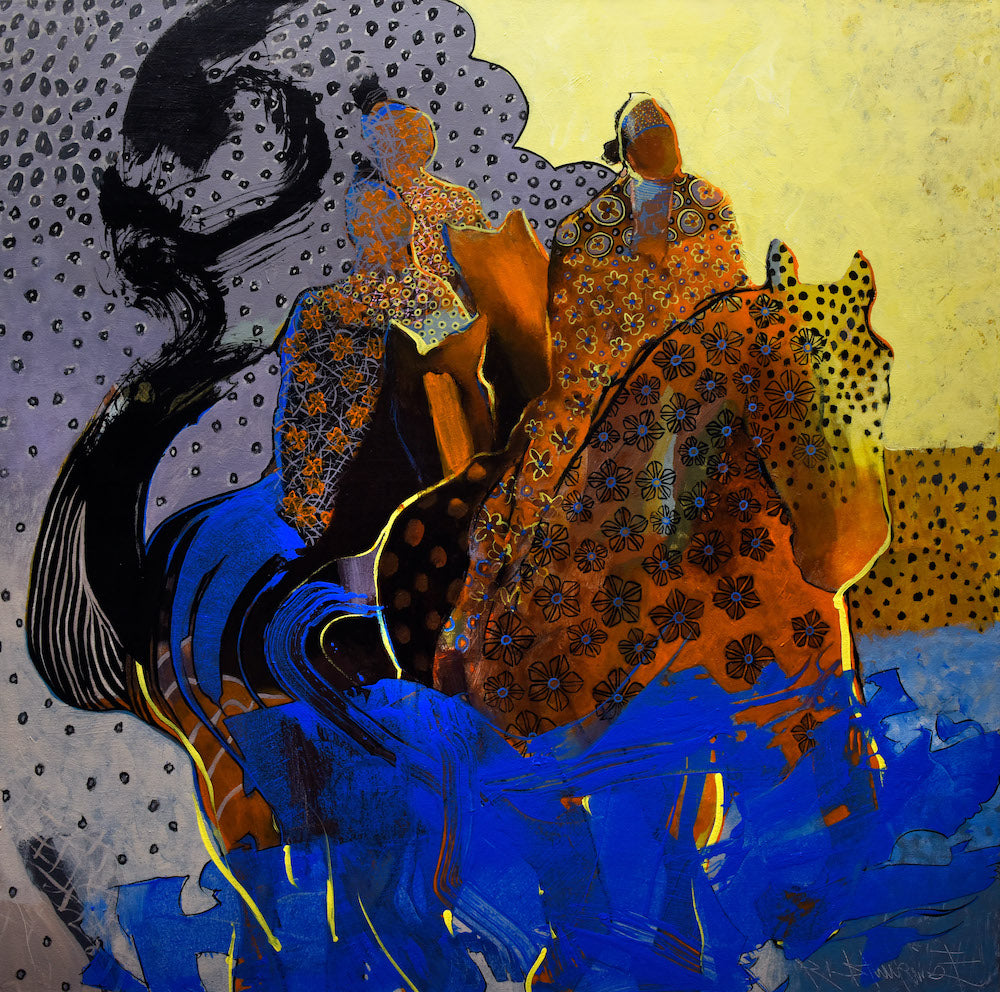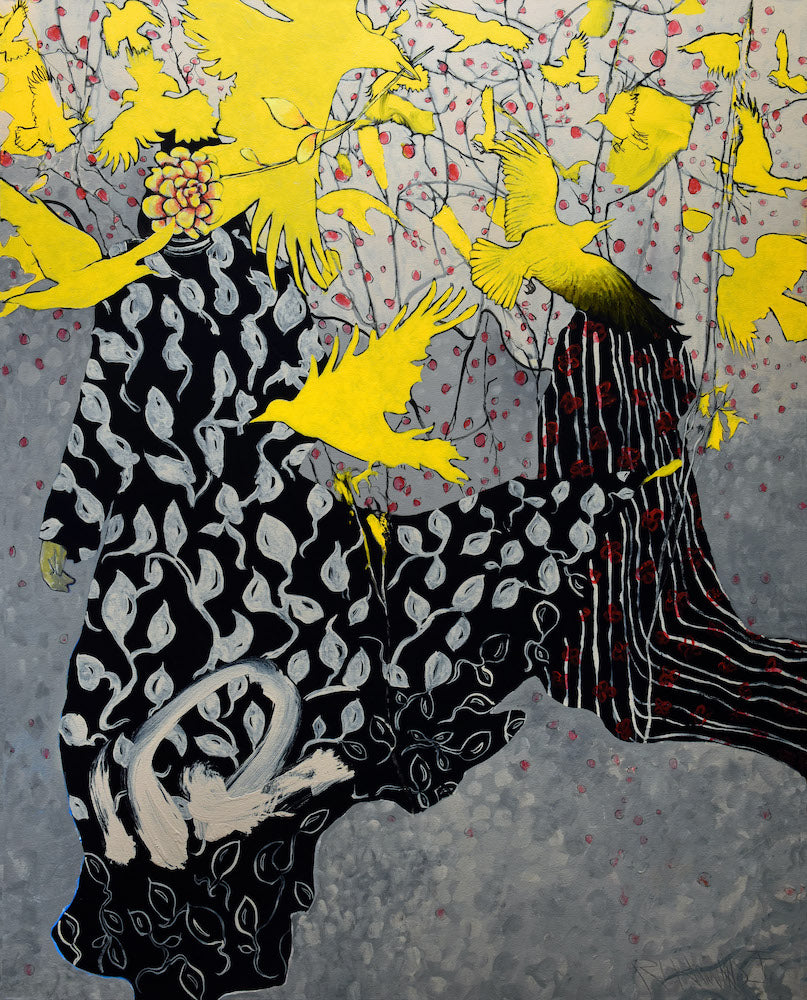Montana artist Rocky Hawkins centers his practice in a vivacious pursuit for growth. Throughout a painting career of 50 years, continuous revolution has given way to entirely new subject matter. Today, Rocky continues to value the challenge of change as a tool to shape his artistic process. For a highly renowned artist whose name is recognizable across the American West, embracing stylistic change can be intimidating—I would go so far as to say rebellious—but Rocky is steadfast in his belief that the desire to move forward supersedes any fear.
“I love the unknown, the mystery, the imperfection.”
I asked Hawkins to tell us what his new collection, The 13 Truths, means for him. With humility and assurance, he described the inspiration and drive behind the pieces. To put it briefly, the new collection is a love-letter to Eastern culture, art, and philosophy, endowed with spiritual intention for the purpose of making the world a better place. It conceptualizes mystical realities into visual entities, and fuses iconic Western motifs like the cowboy on a horse with patterns inspired from Japanese paintings and calligraphy. We see his evolution and renewal in this collection, and yet the work is undeniably Rocky Hawkins—a testament to the strength of his artistic voice.

The series began as a collaborative effort with Rocky’s wife and business partner Kat Hawkins, born out of their shared newfound love for yoga, meditation, and Eastern philosophies such as Buddhism and Hinduism. Through cultivating these practices, a deep desire grew to share positivity with others, both visually and through a narrative. These attributes from which the paintings are named–Awareness, Kindness, Honesty, Compassion, Courage, Forgiveness, Integrity, Love, Respect, Truth, Wisdom, Trust, Authenticity Gratitude, and Confidence–are truths that reverberate through Kat and Rocky’s way of being.
Hawkins was deeply inspired by Japanese Calligraphy and block printing. The gestural mark making spoke to his own language of painting, an impressionistic free flowing process. Each piece includes a significant symbol which resembles Japanese, but Rocky has created his own language. Each character is a unique original symbol attached to the painting. The name of each piece was not pre-assigned to an attribute, so the mystery remained as to which painting would match which truth until the work was finished. The names evolved organically with each process, as meaning unfolded itself through practice. Details and patterns revealed themselves in a dance between artist and canvas, fearlessly becoming.

Rocky refuses to create an illusion of how a painting should be. His process needs space and freedom to become without expectation. He was deeply influenced by the concept of Wabi Sabi (侘び寂び), a traditional Japanese worldview that accepts the beauty of imperfection, impermanence, and incompleteness in nature. It is often depicted in Japanese art. In our discussion of Wabi Sabi, he told me, “Everything in this world is imperfect and impermanent. Imperfection is the acceptance of the unknown in painting. There are mistakes in the painting that are actually part of the foundation. Once you accept the mystery of the mistake, then you find the painting.” We see in his work that if it is invested in, imperfection is transcendent.
Hawkins says The 13 Truths is just the beginning. In his own words, the painter has never “believed in believing”. He has been practical in his work and in life, as subscribing to any one philosophy can give way to a closed mind, but embarking on the journey of Eastern knowledge with Kat has opened up his world both externally and internally. Through unlearning, a belief in Self has awoken. I asked him how this journey may change his identity as a Western painter. He went on to share his deep love and admiration for the American West – the cowboys and Indians, the vast land, the horses and ranches and stables, the art of living in the great wide open – but he assured me his identity as a painter cannot be defined solely by a Western title. “I just want to be labeled as a painter that continues through a process of unknowing in order to fully express myself.”

In the last few moments of our conversation, I asked Rocky to tell me what he wants his art to do for others, how a dream project would expand and feed into the world around him. After careful thought, he answered, “I'd like my art to reach a state of complexity that invites others to find mystery in my work, a mystery that intrigues them so strongly that they have to get involved. My dream project would awake a consciousness in others that would invoke an overwhelming joy. On a spiritual level, I want the work to bring an awareness for others to be more kind and more loving. If a viewer collects my work, 10 years later, I want the painting to keep their engagement and keep its mystery, staying alive.”
The 13 Truths is expansive, life-giving, and intrinsically skillful. I would call Rocky Hawkins a mystic, which is defined as a person who seeks by contemplation and self-surrender to obtain unity with the absolute. His curiosity for life has brought him to a masterful place in his painting career, and here at Altamira Fine Art, we are proud to represent his newest series.
Lydia Wilkes | June 12, 2024
